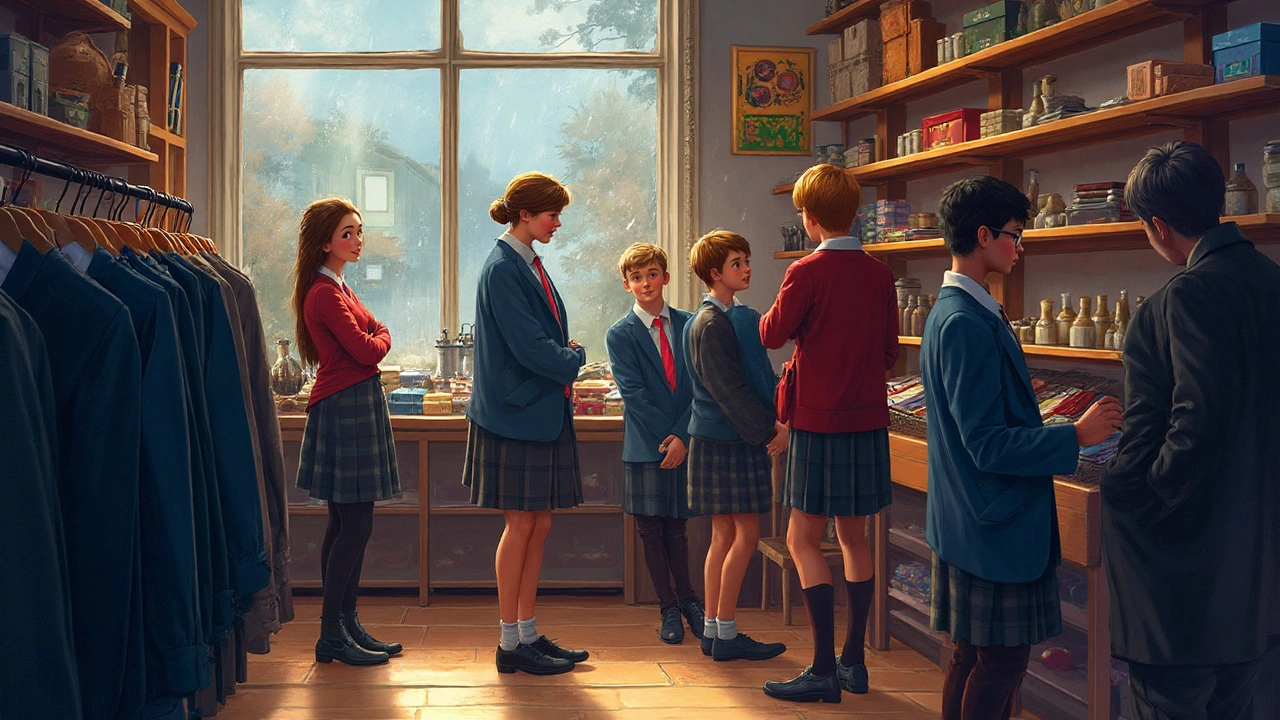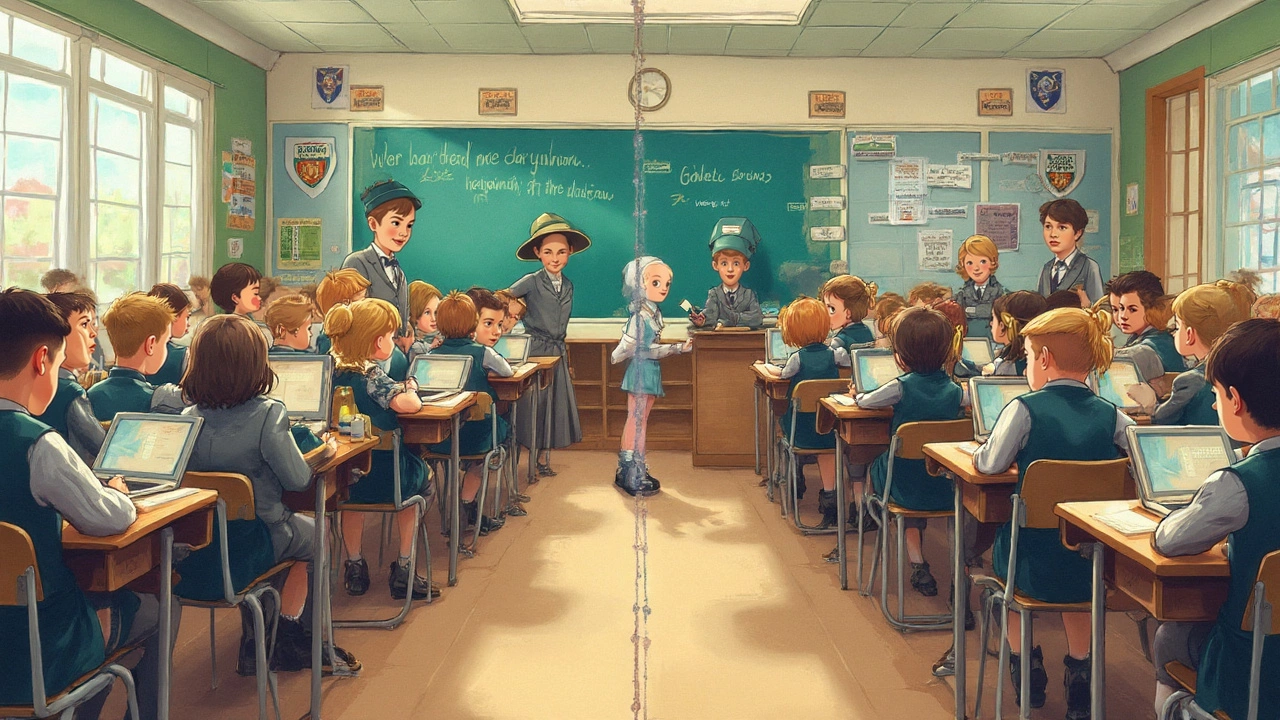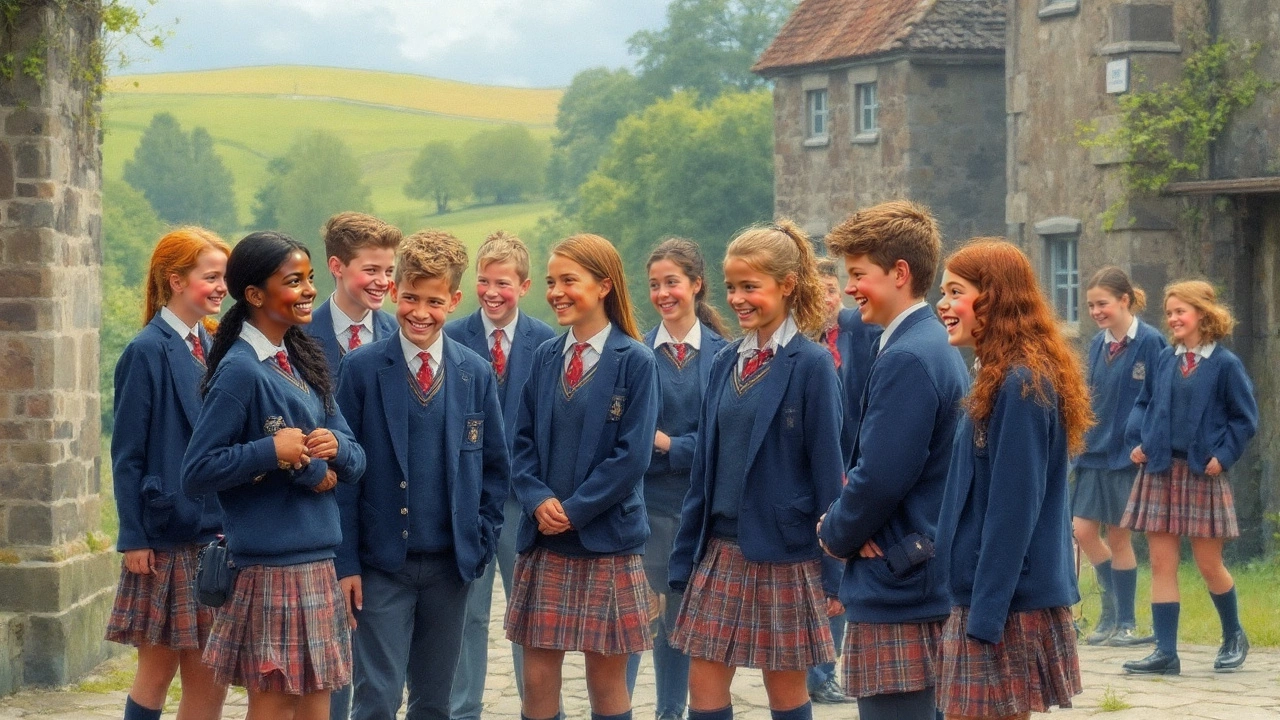Standardised blazers and pleated skirts have become as much a part of Irish schoolyards as the sound of a bell signaling lunch. For anyone who’s grown up or raised kids in Ireland, school uniforms are just a fact of life. On TV, we see the green jumpers of St. Mary’s in Saggart, the navy and grey stripes in schools across Cork or Galway. Why have they become so deeply rooted in Ireland’s educational culture? Some parents love them, others grumble at the yearly bill from McCarthy’s in Cork or the uniform shop in Limerick. But the steady presence of school uniforms is more than just tradition—it’s a mix of practicality, community spirit, and a dash of pride.
The Historical Roots of School Uniforms in Ireland
School uniforms first appeared in Ireland in the late 1800s, initially at private and religious secondary schools. Before that, Irish children wore whatever they had, which often put less wealthy kids at a disadvantage right from the school gate. As the Christian Brothers and Presentation Sisters expanded access to education, they also wanted a sense of unity and fairness—so the uniform was born. By the 1920s, state-funded schools began to adopt uniforms too, and by the 1980s, almost every Irish school required one.
Uniforms here weren’t just about looking tidy or showing school pride. They provided a practical way to blur class lines, especially important in the west or border counties where families’ means varied. You see echoes of that time today—schools in small towns like Ennis or Ballina still opt for the same navy crested jumper year after year. That sense of history lingers. Stories told by teachers in Dublin’s inner city, or by grandparents in Leitrim, connect uniforms with memories of learning tables or skipping in the yard.
Even now, debates about uniforms often come back to tradition. Some schools, like Loreto College in Bray or Coláiste Éanna in Ballyroan, are fiercely protective of their signature colours. Others, especially newer Educate Together schools, question whether tradition should outweigh flexibility. But whether you see the uniform as a symbol of the past or a relic to let go, there’s no doubt it’s tied to the shape of Irish schooling itself.
Cost is another piece of the puzzle. In Ireland, parents on average spend around €120 per child per year on uniforms, according to surveys from Barnardos. It’s not pocket change, especially with the branded PE kits now appearing in secondary schools from Kerry to Drogheda. Yet, for many, that outlay signals that back-to-school is serious business. Many parents also buy second-hand vinyl blazers from school swap events or sites like Uniformity.ie to save a bit, a trend that’s grown since 2020.
Why Uniforms Still Matter for Irish Students
There’s no shortage of debate at the school gate. Ask a group of parents at St. Declan's or Scoil Mhuire, and you’ll likely get an earful: uniforms are meant to make mornings easier, but some reckon they stifle individuality. Yet for the vast majority of Irish families, the uniform system survives—and, for some, even thrives.
The uniform’s biggest win? It flattens social differences fast. In cities like Dublin, students from all backgrounds share the same green sweater at St. Joseph’s or the maroon skirt at Presentation College. There’s less worry about brands or the latest trainers on non-uniform days, and for kids, that means fewer awkward stares or snide comments. Uniforms are a level playing field—it’s not about what you can afford, but what you learn.
Uniform supporters make another point: morning stress melts away. No arguing over outfits or last-minute hunts for clean t-shirts. Ask any mum dashing out for the 8.30 bus, and she’ll tell you—the school jumper is a lifesaver. That’s also why uniform swap shops in Portlaoise or Dún Laoghaire are so popular every August.
But the real Irish twist? Uniforms make school events like sports days, St. Patrick’s Day parades, or feiseanna much easier to organise. Whether marching down the main street in Galway or cheering a county final in Croke Park, there’s a shared identity the uniform brings. Even schools with more relaxed rules, like those in trendy parts of Dublin 8, rarely ditch the uniform for key assemblies or ceremonies.
Discipline is another bit we can’t ignore. Educators around Ireland often say uniforms help keep behaviour in check and build good routines. That idea is backed up by research—the INTO (Irish National Teachers’ Organisation) has found that uniformed students tend to settle quicker in class, follow rules consistently, and focus better. Is it all down to the jumper? Probably not. But it’s definitely a factor.
And yes, there’s pride. Irish schools take awards seriously. Winning a debating trophy at the BT Young Scientist or leading a choir at the Cork Choral Festival looks extra sharp when everyone matches head-to-toe. It isn’t about fashion— it’s about feeling proud to be part of something bigger than yourself.

The Uniform Dilemma: Fashion, Comfort, and Irish Weather
Alright, let’s get real—Irish weather is a sport of its own. Rain one minute, sun the next, then a cold wind from the sea just as you’re heading to the Luas. How do school uniforms stand up? That’s where the Irish approach gets clever.
Look at any schoolyard from Wexford to Sligo, and you’ll spot wool jumpers, sturdy pinafores, and, more recently, more relaxed trousers and polos. Most uniforms here are navy, green, or maroon – colours that hide stains from splashes of Tayto or the odd puddle. Some Dublin schools even allow branded raincoats or waterproofs in winter months. Sturdy, layered outfits are the unofficial dress code.
And the shoes? Brown or black brogues remain the standard, though plenty of Irish parents debate all-black instead of patent—especially with muddy parks like St. Stephen’s Green on the walk home. Many opt for runners for PE, and a growing number of schools are adopting “active uniforms” that mix practical track pants with the usual crested top, taking account of the sports-mad Irish kid.
Comfort is a hot topic now. In surveys from Irish charities like Barnardos and the National Parents Council, kids themselves say scratchy fabric or too-warm blazers don’t work for everyone, especially for pupils with sensory needs or disabilities. Add in Ireland’s ever-shifting climate, and it’s no wonder school boards from Mullingar to Malahide are trialling lighter fabrics and easier fits. The old wool jumper is slowly making way for eco-fibre blends or even recycled options from brands like Trutex and O’Neills.
Fashion comes up as well. Trends drift across school gates—some students desperately want skinny trousers or a modern cut skirt. Earrings, dyed hair, and subtle make-up are frequent points of negotiation with teachers. There’s been a recent push in areas like Derry and Tipperary to modernise uniforms or let kids personalise things a bit, at least with socks or ties. The key is balancing school identity with the desire to stand out—something Irish students know all too well.
For bigger events, holiday assemblies, and the dreaded school photo day, everyone shapes up and ties those jumpers just right. Local Irish photographers know: the uniform still takes centre stage on the family mantlepiece.
Practical Tips for Irish Parents and Students
If you’re starting school in Ireland, getting the uniform right saves a world of hassle down the line. The checklist? First, check your school’s specific rules—some insist on branded ties or special sports kits you’ll need to order from the school supplier (like Grants or Uniformity.ie). For primaries and local gaelscoileanna, most let you pick up generic trousers or skirts at Dunnes Stores, Tesco, or Marks & Spencer with a sew-on crest from the board of management.
- Buy ahead: August is peak madness—lines are out the door and stocks run low.
- Select a bigger size. Irish weather means layers, so factor in a t-shirt underneath and room to grow over the winter.
- Look into uniform exchange events run by your school’s parent association—these are lifesavers for second-hand bargains, especially for branded jumpers or sports tracksuits.
- Label everything. You’d be amazed how many identical green jumpers end up in the lost and found at St. Michael’s or Mercy College.
- Befriend the local cobbler. Leather shoes last much longer with a quick sole repair every few months.
- If comfort is key, seek out stores that offer softer fabric or elastic waists. M&S’s “Sensory Friendly” line is a favourite for many Irish parents dealing with uniform grumbles.
Dublin, Cork, and Galway all have city-centre shops dedicated solely to school uniforms, but in smaller towns, it’s all about community—go to your local department store, and you’re likely to meet other mums swapping tips in the aisle. Some parents are even turning to Facebook groups like “Irish School Uniform Swaps” to bag a bargain from past pupils’ outgrown blazers.
| Average Uniform Costs in Ireland (2025) | Primary | Secondary |
|---|---|---|
| Jumper/Cardigan | €22 | €32 |
| Pinafore/Skirt/Trousers | €18 | €27 |
| Shirt/Polo | €11 | €14 |
| Sports Kit | €30 | €42 |
| Pair of Shoes | €36 | €48 |
| Total Average Per Child | €117 | €163 |
To limit costs, many Irish schools are starting to ditch branded jumpers in favour of plain ones you can buy anywhere. If your school hasn’t yet, chat with the parents’ council—changing uniform policy is often just a committee meeting away.
When it comes to day-to-day wear, layering is king. School corridors can shift from freezing cold to boiling hot, so lots of Irish kids wear t-shirts under jumpers and keep a raincoat in their bag. Sturdy shoes with strong grip handle everything from playground puddles to Friday PE.
Lastly, Irish schools love to get kids outdoors for class walks, field trips, or the Green Schools leaf initiative. A hard-wearing coat and backup socks tucked in the schoolbag have saved many a soggy uniform more than once.

The Future of School Uniforms in Irish Education
Are school uniforms here to stay in Ireland? For now, yes, but they’re evolving. The country’s changing fast, and so are the people in it. With new communities arriving, more Irish-born kids keen to push boundaries, and an educational system that prides itself on adaptability, it’s no wonder uniform policies are being re-examined. In Dublin and Cork, a handful of schools now allow gender-neutral choices and trousers for all. The Irish National Parents Council reports that over 60% of parents support giving students more say in what they wear, especially at secondary level.
Some schools have trialled “no uniform Fridays” or themed clothes days to boost morale and fundraising—it’s usually a big hit, especially with creative kids keen to show their personality. That being said, most Irish teachers and boards believe strongly that a shared look helps maintain community spirit.
Sustainability is another huge angle. With a national focus on climate and waste—think of the recent Green Schools awards, or the rise in charity shop shopping in Cork and Limerick—schools are starting to switch to recycled materials and easy-care blends, which is better for both the environment and parents’ wallets. Look out for more swaps, rental schemes, or upcycling projects in secondary schools—Galway is already piloting a project where parents trade pieces post-Junior Cert.
Whatever changes come, the heart of the Irish uniform remains: a way to belong, to play your part, and walk into school feeling ready for whatever the day throws at you (rain or shine—or, knowing Ireland, both in one morning). The next time you see a sea of green and navy walking out of Tesco in Ballinasloe or waiting for the Dart at Dun Laoghaire, you’ll know—it’s more than just clothing. It’s a daily tradition with deep Irish roots, and it’s changing alongside the country itself.
